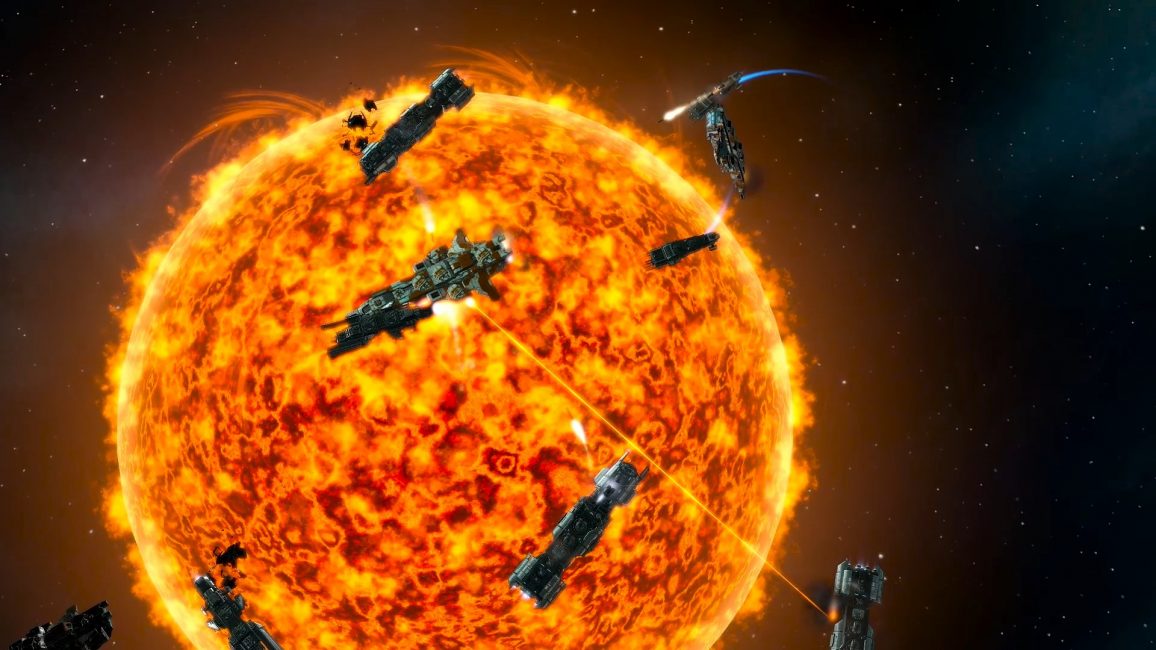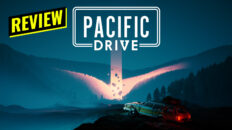Developer: Paradox Development Studio
Publisher: Paradox Interactive
Reviewed on: PC & Mac
Code Received.
“How will you conquer the galaxy?” This is the question Stellaris asks you. Will it be through staunch diplomacy, advanced technological breakthroughs, or shrewd trade practices? For better or worse, the real answer to the question is “None of the above.” Stellaris is a real time 4x strategy game that adheres the tropes set by it’s predecessors; you’re goal is to control a majority of a galaxy, and the only effective way to do that is to build a starfleet powerful enough to crush your foes, and even some of your allies. Stellaris is a great looking, great playing, accessible strategy game that unfortunately suffers from a meandering, drawn out middle game that may prevent some from fully enjoying the experience.
One of the most important parts of Stellaris is race creation. The options you have to choose from range from mostly superficial things like facial features and ship designs, to hugely important attributes like your attitude towards new alien species (xenophobic vs. xenophilic) and whether you embrace the physical (materialistic) or intangible (spiritual). These characteristics play a major role in how easy or difficult your game is going to be and their importance isn’t stressed enough during the race creation process. Some diplomatic, technological, and societal options will be inaccessible depending on the choices you make.
Stellaris excels at making space exploration fun and awe-inspiring. Stars and planets look amazing and often times unique. Surveying a new system to discover what resources and secrets it holds is fun for the early portion of the game. Many solar systems contain “anomalies” to research. These can lead to technological breakthroughs, or they could be primitive civilizations that you can observe as they grow. But keep a close eye on them because they could mature into a rival race that will have to be dealt with lest they become unruly. The enjoyment I got out of exploring new systems in hopes of finding new and exciting things is something only games like this can do. The galaxy is so big and varied that I felt like I was stumbling onto something new all the time.
The mid-game is where most of your time will be spent, however. After all the systems are explored and all the planets colonized, it’s time to exploit all you can. Stellaris does a few things to make this portion of the game less tedious. For instance, it only allows you to directly control five planets by default. You can increase the number of planets you can control through technological research, but the opportunity is rare. Controlling more will have a negative impact on the amount of resources you produce, and how much galactic influence your empire accrues.
Once you colonize or capture more than five planets you must begin assigning plants, and adjacent systems, to Sectors. These Sectors are mostly self-sufficient, however, you still have control over their governor and planetary “Edicts” which involve things like propaganda broadcasts to raise happiness, or farming subsidies to increase food output. You also maintain direct control of spaceports in the Sectors, so you can still build fleets there if necessary. The Sectors feature makes managing what could be a massive smattering of planets less daunting.
When you invade a foreign planet you have options on how to deal with the previous inhabitants, and this is where the game dragged for me. Those options are heavily dictated by pop modifiers like what kind of government you have vs. what kind they had, and whether or not they are xenophobic. You will have a hard time quelling unrest on a planet that was previously xenophobic. When trying to appease a restless population, the information displayed to the player about which actions are working and which are not is a little unclear. I felt like sometimes I was doing it right and nothing was changing, other times it seemed like an unhappy population suddenly got happier and I wasn’t sure why. Considering planetary conquest is a major part of Stellaris’ mid-game, this information should be more transparent.
Between the lack of clear information about newly conquered populations and the fact that you can only conquer a few planets at a time from an enemy, the mid-game is really drawn out and dull. It turns more into a waiting game for fleets to build, populations to become happy and productive, and peace treaties to expire. Some of these things can be expedited by the type of civilization you have. For instance, a militaristic race will be able to produce war ships faster, but will also have more enemies because they are aggressive. There are pacifist options, but because most civilizations dislike you right off the bat, it is just as time consuming to broker allegiances than it is to wipe everyone out.
These types of games live or die by their UI, and for the most part Stellaris succeeds in this department. There is a fairly robust tutorial system that does a fair job of guiding new players, but falls short in a few aspects. All of the information is cleanly displayed and easily accessible, as long as you are willing to poke around for some of the harder to find menus. There is a lot of useful information displayed in a quick-access bar on right hand side of your screen. Here you can quickly access your science and construction ships, your fleets, planets, and even troublesome factions. The information displayed here is super valuable and makes everything easier to manage. The diplomacy screen could use some work displaying more useful information like other civilization’s motives and values, but overall all the menus serve their purpose well.
One gripe I have with the UI is how borders are shown on the galaxy map. They are displayed with a color-coded fog of influence that can sometimes make it difficult to tell whether or not a particular solar system with within your borders. This is exasperated by the fact that when colonizing a new world, or building an outpost, there doesn’t appear to be a way to preview how much your borders will expand after construction. If you are trying to stop an encroaching enemy, or exercise caution to avoid a border dispute, knowing this information before hand is valuable. As it stands, you have to start building and hope you get the results you’re looking for.
Technology research is also streamlined. You have three fields of science, Physics, Society, and Engineering, and you can be researching one technology in each respective field simultaneously. There are stronger weapons to research, better ships, increased resource efficiency, and even genetic engineering which allows you to alter the traits of an entire species. After you complete a research project you are presented with three new techs to research, but these techs aren’t persistent. So if you choose to research a technology that will expand your borders instead of one that will increase your ship’s armor, that armor tech may not necessarily be there to choose next time around. While all the research options eventually circle back around, their rotation seems to be random, so you never know what you’ll be getting next or when something you want will show up again. I like how this forced me make strategic decisions on which techs to research, but it also made some of the decisions superfluous when I was presented with nothing that really interested me.
Now let’s discuss the exterminate portion of this 4x experience. As I mentioned before, the only real option on the table to beat a game of Stellaris is to build a big fleet and wipe everyone out. You do have some diplomatic options like non-aggression treaties and alliances, but these are more or less there to let you focus your attention elsewhere until the time is right to strike faux allies. The combat is just as simple as the goal. It all takes place in real time and essentially boils down to who has the bigger force. You have your typical ship assortments starting with small corvettes, and going all the way up to giant battleship. When you build a fleet it displays the accumulated firepower of that fleet for you to see, as well as the firepower of the enemy you are engaging. In almost every instance the bigger number wins. There is are no real tactics to speak of when fighting another fleet, so while it takes place in real time all you can really do is sit back and wait for the fight to be over. I really wish there was more nuance to the to the combat. You can assign admirals to your fleets, but they only provide slight advantages. After a hand full of combat encounters, the fighting relegated itself to nothing more than busy work, but that is often the case with games like this.
Stellaris is the first time Paradox Development Studio has ventured outside of historical strategy games, taking what they have build on Earth and bringing it to the stars. To put things simply, Stellaris is in the “expand” phase of it’s life. What’s here is impressive, fun, and addicting while also being rough around the edges. If you are a fan of these types of grand strategy games, then I definitely recommend picking this up because it truly is an enjoyable experience overall. However, there is still space to explore, quirks to be repair, and Paradox seems to be in it for the long haul. They have already announced that they will be releasing major updates to the game, adding new content, and tweaking what’s already there. This leaves me excited to see where Stellaris ends up because it has a solid foundation from which to build upon.








